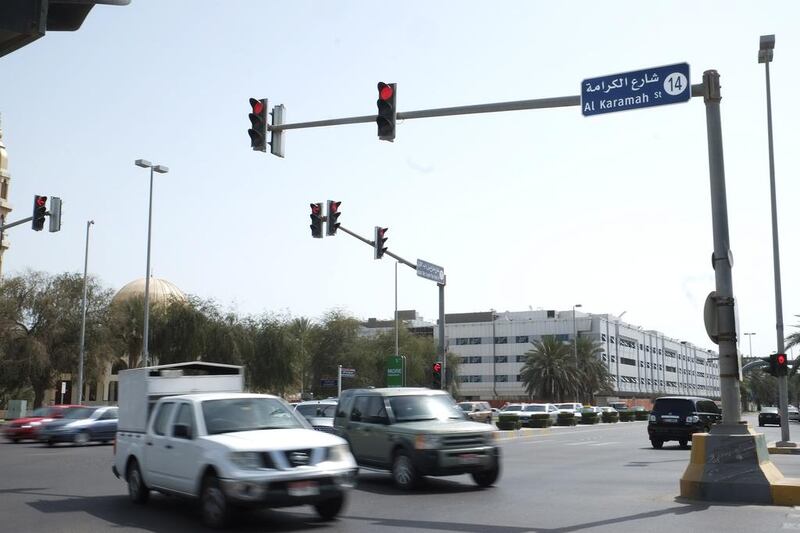ABU DHABI // Motorists are warned that crews of emergency vehicles may be given the power to take control of traffic lights at intersections on the capital’s roads.
The Abu Dhabi Department of Municipal Affairs and Transport is testing an emergency vehicle priority system which allows civil defence, ambulance and rescue services to send signals to lights as they approach them.
Work began in March 2014 on Abu Dhabi's new central traffic control system, using about 20 sensors at each intersection to monitor the volume of traffic.
The system can give priority to emergency vehicles and buses and respond to variations in traffic flows by reducing delays and queue lengths at junctions.
The launch date for the system is yet to be decided.
“Those are the smart traffic signals that are being implemented in Abu Dhabi and Dubai,” said Phil Clarke, a principal road safety consultant at Transport Research Laboratory UAE.
In the UK, a similar system is in place to give priority to buses.
“The system enables emergency vehicles to have a freer passage through the traffic signals and prevents a tailback of traffic and emergency service vehicles not being able to fight through the traffic to get into the intersection,” Mr Clarke said.
“If you’re thinking about deploying your emergency services and you’ve got this facility, you will know more accurately what the response time would be from the civil defence station, for instance, to certain locations.”
If an ambulance can travel more quickly to a site, the system might help to resolve large congestion problems there, said Michael Dreznes, executive vice president of the International Road Federation.
“This will allow the traffic to return to normal at a much faster rate,” he said. “It should also reduce the likelihood of side impact collisions, commonly called T-bone accidents, at intersections.”
Experts urged motorists to pay attention to emergency vehicles as they make their way to help others.
“If you’ve got an ambulance behind you, or civil defence or police that is clearly on an emergency call, just try to move over and give them room to go through,” Mr Clarke said.
“But if you don’t see the size of an ambulance or civil defence lorry in your mirror, you’re clearly not paying attention to what you’re doing.”
While some do give way to emergency vehicles, other drivers panic and are unable to clear the path for them, said P M Abdul Razak, assistant manager at Emirates Driving Institute’s instructor training centre.
“Novice drivers may find it difficult to spot a safe gap when an emergency vehicle is approaching,” he said. “While on the move, some drivers are scared to change lanes and unintentionally block the vehicle.”
Not giving way could cause a serious accident or lead to an ambulance being out of action.
“All drivers must check their rear-view mirrors frequently for any emergency vehicle travelling behind them,” Mr Abdul Razak said. “They should indicate their intention to pull over in a space to allow the vehicle to pass safely, and watch out for other emergency vehicles as there may be more than one.”
rruiz@thenational.ae






